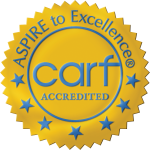In 2017 it’s nearly impossible to be ignorant of the levels of drug addiction ravaging communities in the United States. Stories of heroin overdose epidemics or community harm reduction efforts have become a daily feature of news and social media. Just this week The Guardian reported on a study of the heroin epidemic that found that heroin use in the U.S. is about five times greater today than it was a decade ago. Some demographics studied saw an even greater jump in heroin use.
What’s being done to stem the rise in addiction? Government and public health organizations have been using a multi-pronged approach, attempting to expand treatment options, spread awareness and educate the public, limit opioid prescribing, and crack down on drug trafficking with harsher punishments. Harm reduction efforts like opening more syringe exchange locations and distributing overdose-reversing naloxone kits have also been emphasized.
It can be argued that these are all important ways of responding to the heroin epidemic. But there’s also good reason to prioritize the role of addiction treatment over some other responses. It comes down to the fact that addiction is a chronic health disorder. Acknowledging this fact lets us see the value in promoting treatment and understanding of addiction as a health disorder.
Some states dealing with grave epidemics of heroin use have recently introduced legislation to place much stricter limits on the amount of opioids doctors can prescribe to patients. Ohio officials just announced that opioid prescriptions in the state will be limited to seven-day supplies. The current legislative session of Kentucky just wrapped after approving a bill to limit opioid prescriptions to five days. The new rules in both states aim to reduce the number of “leftover” pain pills in circulation from excessive prescribing practices. The idea is that fewer opiates distributed through prescriptions will lead to fewer new addictions.
Reducing excessive opioid prescriptions is an important part of responding to the crisis, but there are risks involved too. The crackdown on “pill mills” that occurred within the last decade helped reduce the flow of prescription opioids into communities, but it had the secondary effect of driving up heroin use. So tightening the limits on opioid prescriptions risks sending those who are dependent on opioids to illegal means of relief if they run into barriers obtaining them legally. That often means heroin, with the related risks associated with injecting drugs and using substances that may have been mixed with even more dangerous drugs.
The bill approved by the Kentucky legislature also carried a measure increasing the criminal punishments for trafficking hard drugs. Under the new law, if signed by the governor, pretty much any amount of fentanyl trafficked may result in a class C felony. Hardening criminal justice responses to drug trafficking has been an increasingly common response to rising rates of opioid overdoses. Communities have seen devastating outbreaks of fatal overdoses. These outbreaks are often related to heroin that has been mixed with highly potent opioids like fentanyl or carfentanil. So it makes sense that law enforcement would crack down on the flow of these lethal substances.
However, the focus on prescription opioid misuse and incarcerating traffickers shouldn’t obscure the importance of building our capacity to deal with addiction as primarily a health disorder. Recently the American College of Physicians issued a paper calling for greater emphasis on the health and treatment aspects of the heroin epidemic. The paper called for a number of related measures for dealing with the epidemic of drug use as a medical emergency. It’s important to note that their recommendations do include limiting opioid prescriptions. However, this is combined with other recommendations that make sure the medical/ treatment needs are at the center of the combined approaches. Other recommendations in the paper included:
- Requiring health insurance providers to cover addiction treatment
- Increasing substance use education in medical schools and other physician-training institutions
- Making medication-assisted treatment options more accessible
- Increasing the number of behavioral health experts working to treat addiction
- Eliminating stigma attached to drug addiction
As we see more efforts to limit opioid prescriptions and increase penalties for drug offenders, we shouldn’t forget that recent years have seen a new consensus view on addiction. That consensus by physicians and public health officials says that addiction is a chronic, relapsing disorder that is best resolved by good practices in disease management.
Addiction treatment professionals and ordinary people have also been waging a prolonged effort to reduce the stigma that was long associated with addiction. It took years to get mainstream acknowledgment that addiction is health disorder rather than a moral failing. Reducing stigma is essential for helping people with substance use disorders find their way to treatment.
As efforts to fight drug trafficking and tighten prescription controls are intensified, let’s not lose sight of the progress that’s been made in helping the public understand and empathize with the fact that anyone can be an addict. Though many different measures are needed to resolve the different facets of the heroin epidemic, we should keep these efforts unified under a broader understanding that those with addictions are sick and in need of compassionate health care.


